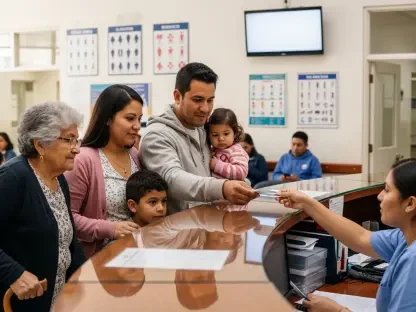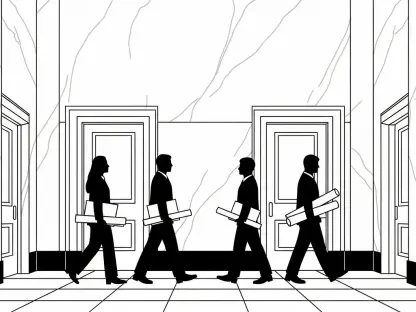As the expiration of the Terrorism Risk Insurance Act (TRIA) looms in 2027, the insurance industry and regulators are sounding the alarm about potential economic fallout if Congress doesn’t act. Today, we’re joined by Simon Glairy, a leading expert in insurance and Insurtech, with deep expertise in risk management and AI-driven risk assessment. With years of experience navigating complex policy frameworks, Simon offers a unique perspective on why TRIA remains vital for insurers, businesses, and the broader economy. In our conversation, we explore the origins and mechanics of TRIA, the urgency for its extension, and how it underpins market stability and growth.
Can you walk us through what the Terrorism Risk Insurance Act, or TRIA, is and why it became necessary after the September 11 attacks?
Absolutely. TRIA was enacted in 2002 as a direct response to the catastrophic events of 9/11. The attacks resulted in unprecedented insured losses, and insurers quickly realized they couldn’t handle the financial risk of future large-scale terrorist events on their own. Lenders started demanding terrorism coverage for properties, but private insurers were unable to offer it due to the sheer unpredictability and scale of potential losses. TRIA stepped in as a federal backstop, essentially partnering with the private sector to share the burden of these risks. It ensured that coverage remained available and affordable, preventing a complete market collapse and allowing businesses to continue operating in high-risk areas.
Why do you think insurance groups and regulators are so insistent on a long-term extension of TRIA well before its 2027 expiration?
The push for an early extension is really about avoiding uncertainty. If TRIA lapses, or even if there’s a delay in renewal, insurers might start pulling back on offering terrorism coverage due to the risk of being left exposed. This could ripple through the economy—businesses in urban centers or high-profile areas might struggle to secure financing for projects without that coverage. Regulators and trade groups know that waiting until the last minute creates a dangerous gap, potentially destabilizing the insurance market and slowing economic activity. A long-term extension, like the seven to ten years they’re advocating for, gives everyone certainty to plan ahead.
What makes a federal backstop like TRIA so critical for private insurers to even consider offering terrorism coverage?
The core issue is that terrorism risk is incredibly hard to predict or model compared to natural disasters like hurricanes. The frequency, location, and scale of an attack are almost impossible to quantify, which means insurers can’t price the risk accurately or set aside enough capital to cover potential losses. Without TRIA, many would simply exit the market because the financial exposure is too great. TRIA provides a safety net—knowing the federal government will step in after a certain loss threshold gives insurers the confidence to offer coverage at rates that businesses can actually afford.
Could you explain how TRIA structures the sharing of losses between insurers and the federal government?
Sure, it’s a shared responsibility model. Under TRIA, insurers are required to offer terrorism coverage, but they’re protected by a framework where they pay a deductible first—a specific amount of losses based on a percentage of their premiums—before federal assistance kicks in. Once that threshold is crossed, the government covers a significant portion of the remaining losses, up to a certain cap. Insurers then repay a part of that federal funding over time, often with interest. This setup spreads out the financial impact for insurers, making it manageable while ensuring the government isn’t just handing out a blank check.
Some industry leaders have called TRIA a cornerstone of economic resilience. What do they mean by that, in your view?
They’re pointing to how TRIA goes beyond just insurance—it’s a foundation for economic stability. When businesses know they can get terrorism coverage, they’re more willing to invest in properties, build in urban areas, or host large events, all of which drive jobs and growth. For communities, it means recovery after an attack isn’t derailed by a lack of insurance payouts. And from a taxpayer perspective, the program’s design means it costs very little unless triggered, yet it prevents the kind of economic paralysis we saw post-9/11. It’s a proactive shield for the economy as a whole.
There’s also talk about TRIA fostering competition in the insurance market. How does that play out for insurers and consumers?
TRIA levels the playing field. Without it, only the largest insurers with massive capital reserves might even consider offering terrorism coverage, and even then, sparingly. With TRIA’s backstop, smaller and mid-sized insurers can participate too, because they’re not shouldering the full risk alone. This creates a more competitive market, which translates to more options for businesses and typically lower premiums. Consumers and companies benefit from having a range of policies to choose from, rather than being stuck with limited, expensive coverage from just a few big players.
Even though TRIA hasn’t been directly tested since its creation, it’s credited with supporting construction and economic growth. Can you share how that works in practice?
That’s right, while we haven’t seen a major triggering event, TRIA’s presence has a quiet but powerful effect. For instance, large-scale construction projects—like skyscrapers or stadiums in major cities—often rely on financing that requires terrorism insurance. Without TRIA, lenders might hesitate, or projects could stall due to sky-high premiums. Developers and investors feel more secure knowing coverage is available and backed by the government, so they greenlight projects that create jobs and boost local economies. It’s about confidence as much as it is about actual payouts.
Looking ahead, what is your forecast for the future of TRIA and its role in the insurance landscape?
I think TRIA will remain a critical piece of the puzzle for the foreseeable future, especially as terrorism risks evolve with new threats like cyberattacks or drone attacks, which weren’t on the radar when it was first created. My forecast is that Congress will likely extend it, given the bipartisan support it’s historically had, but there might be debates over adjusting terms—like the deductible levels or the scope of covered events—to reflect modern risks. I also expect more integration of technology, like AI-driven risk modeling, to help insurers and regulators fine-tune how TRIA operates. Ultimately, its role as a stabilizer for both the insurance market and the economy isn’t going away anytime soon.









